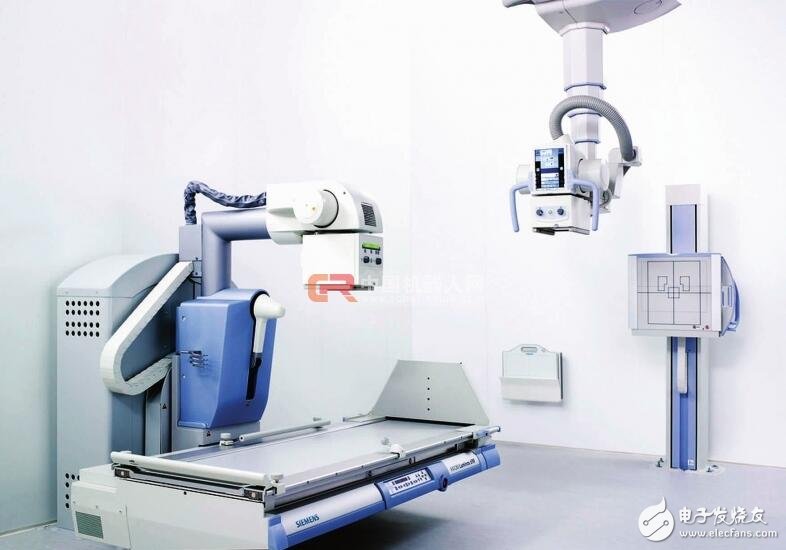The market value trend data of global medical robots shows that in 2014 it was 2.6 billion dollars, and by 2020 it is expected to reach 7.6 billion dollars. According to statistics from the China Food and Drug Administration, the number of medical robot surgeries has jumped from 25,000 in 2005 to 650,000 in 2015. PwC's latest medical robot industry report predicts five major trends in the future, including system integration, human-computer interaction, structural design, perceptual recognition, and cognitive learning capabilities. The report believes that the increase in per capita disposable income will lead to an increase in demand for high-quality medical care, and medical robots have the advantage of less bleeding, higher precision, and faster recovery. The overall development trend shows that the medical robot market has great potential.
Since China's medical device research and development is currently in the development stage, China's medical device supervision is stricter than the United States.
Classification: China and the United States have very similar definitions for medical device classification, but surgical robots are classified in the second category in the United States and in the third category in China. In addition, China is more stringent than the United States for similar medical device approval guidelines and regulations.
Approval cycle: Because China has a higher classification of medical robots, the registration and approval cycle for medical robots for marketing and sales is much longer than in the United States.
Validity period: China has a valid period for medical devices that have been approved for marketing and sales. After the expiration date, it needs to be re-registered with the China Food and Drug Administration. The United States does not have a similar validity period.
Clinical Trial Requirements: China requires clinical trials for all Class II and Class III medical devices. In the United States, for the second category of medical devices, some clinical trials are needed.
Commonly used medical robots
1. Surgical robots, surgical robots can be used for surgical image guidance and minimally invasive surgery. At the moment, most surgical robots are controlled by surgeons. The doctor masters the input device and the robot follows the instructions to operate on the patient.

2. Rehabilitation robots, rehabilitation robots can be used to assist and treat disabled, elderly, and inconvenient people.
3. Auxiliary robot, an auxiliary robot is a device that can sense and can give feedback to the user after processing the sensory information.
4. Service robots, common medical service robots include medical transport robots and disinfection and sterilization robots.
To study and develop the main five aspects
1. The definition and standardization of systems and models will improve the integration and interaction of components.
2. People and machines use the sense of touch to achieve interactive feedback and enhance the sense of reality, making the interaction more natural.
3, light weight, strong, agile components will be more energy efficient, not easy to cause physiological rejection and more miniaturization, while at the same time reducing costs.
4. The interactive multi-model 3D sensor will have high resolution conditions - with independent sensing to detect, identify objects and the environment.
5. Improved cognitive and machine learning skills will enhance cognitive expression and reasoning, context, situational awareness, and action planning.
Aluminum core Solar Cable is a photovoltaic circuit using aluminum as a conductive material. It is widely used in solar power generation systems to transport the electricity generated by solar panels.
Compared with traditional copper solar cable, aluminum solar cable has some obvious advantages, the most important of which is low cost.
1. Low price: Aluminum is a common metal, and its price is cheaper than that of copper. Therefore, the use of aluminum solar cable can reduce the cost of the system and make the entire photovoltaic power generation project more economical.
2. Lightweight: Aluminum has a lower density and is lighter than copper. The aluminum core optical cable can reduce the weight of the cable and facilitate installation and maintenance.
3. Strong corrosion resistance: Aluminum has good corrosion resistance and can maintain a long service life under harsh environmental conditions. This makes the aluminum solar cable more reliable for outdoor use.
4. Excellent conductivity: although the conductivity of copper is higher than that of aluminum, the aluminum solar cable can make up for the shortcomings of the low conductivity of aluminum to a certain extent by optimizing the design and process and ensure the efficiency and stability of power transmission.
It should be noted that there are also some limitations and precautions for aluminum solar cable. Due to the low conductivity of aluminum, the resistance of the aluminum solar cable will be relatively high, so it is necessary to choose the wire diameter and length reasonably when designing and installing to ensure the efficiency of power transmission. In addition, aluminum is prone to electrochemical reactions when it comes into contact with copper, so corresponding measures need to be taken when connecting aluminum solar cable and other components, such as using special connectors or coating protective layers.
In general, aluminum solar cable with its low cost, corrosion resistance, light and other advantages, has been widely used in solar power generation systems, and brings economic and reliability benefits to photovoltaic power generation projects.
Aluminum Solar Cable,Photovoltaic Solar Cable,TUV Aluminum solar cable,Aluminum Energy Cable
Suzhou Yonghao Cable Co.,Ltd. , https://www.yonghaocable.com